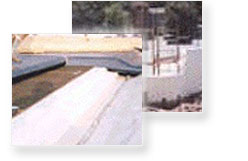
EPS protective packaging offer a board range of physical properties to the
designer and user.
These properties, in combination with satifactory engineering considerations
provide the design flexibility required to create truly cost-effective protective
packaging.
With the average package handled by up to nine different people and with
more than 445,000 packages a day per distribution enviroment can be great.
Millions of manufacturers over the past 40 years have relied on EPS transport
packaging because of its exceptional cushioning properties and high tensile
strength.



The mechanical properties of modeled EPS depend largely on density. Generally, strength characteristics increase with
density. However, variables such as the grade of raw material used, geometry of the molded part and processing
conditions will affect package properties and performance. As seen in the table below, most properties of foams are
strong functions of density, which allows a processor to fine-tine the exact performance needed by a simple processing
change, without redesign of tooling.
 |
 |
 |
| Density, lb. /cu. ft |
1.0 |
2.0 |
3.0 |
| Compressive strength, p.s.i. |
12 - 17 |
31 - 37 |
52 - 56 |
| Tensile strength, p.s.i. |
22 - 27 |
58 - 61 |
92 - 95 |
| Thermalresistance, R/in. |
3.8 |
4.2 |
4.3 |


Many temperature sensitive pharmaceutical and medical products use EPS because comparable packaging materials can
rarely offer the same level of thermal insulation. Strongly relied upon in the food distribution industry, EPS is ideal for
long distance shipment of perishable foods. EPS is highly resistant to heat flow. Its uniform, closed cellular structure limits
radiant, connective and conductive heat transfer. The thermal conductivity (k factor) of molded polystyrene varies with
density and exposure to temperature,as shown in the table below.

The cellular structure of molded polystyrene is essentially impermeable to water and provides zero capillary.
However, EPS may absorb moisture when it is completely immersed due to its fine interstitial channels within the bead
-like structure. While molded polystyrene is nearly impermeable to liquid water, it is moderately permeable to vapors
under pressure differentials. Vapor permeability is a function of both density and thickness.
Generally, neither water nor vapor affects the mechanic al properties of EPS.

The volume resistively of molded polystyrene within the 1.25-2.5 pcf density range, conditioned at 73 F and 50% r.h.
is 4x1013 ohm-cm. The dielectric strength is approximately 2KV/mm.
At frequencies up to 400 MHz, the permittivity is 1.02-1.04 with a loss factor less than 5x10-4 at 1MHz and less than
3x10-5 at 400 MHz.
Molded EPS can be treated with anti-static agents to comply with electronic industry and military packaging specifications.

Water and aqueous solutions of salts, acids and alkalis do not affect molded polystyrene. Most organic solvents are not
compatible with EPS. This should be taken into consideration when selecting adhesives, labels and coatings for direct
application to the product. All substances of unknown composition should be tested for compatibility. Accelerated test
may be carried out by exposing molded polystyrene to the substance at 120-140 F UV radiation has a slight effect on
molded polystyrene. It causes superficial yellowing and friability, but does not otherwise affect physical properties.
|




